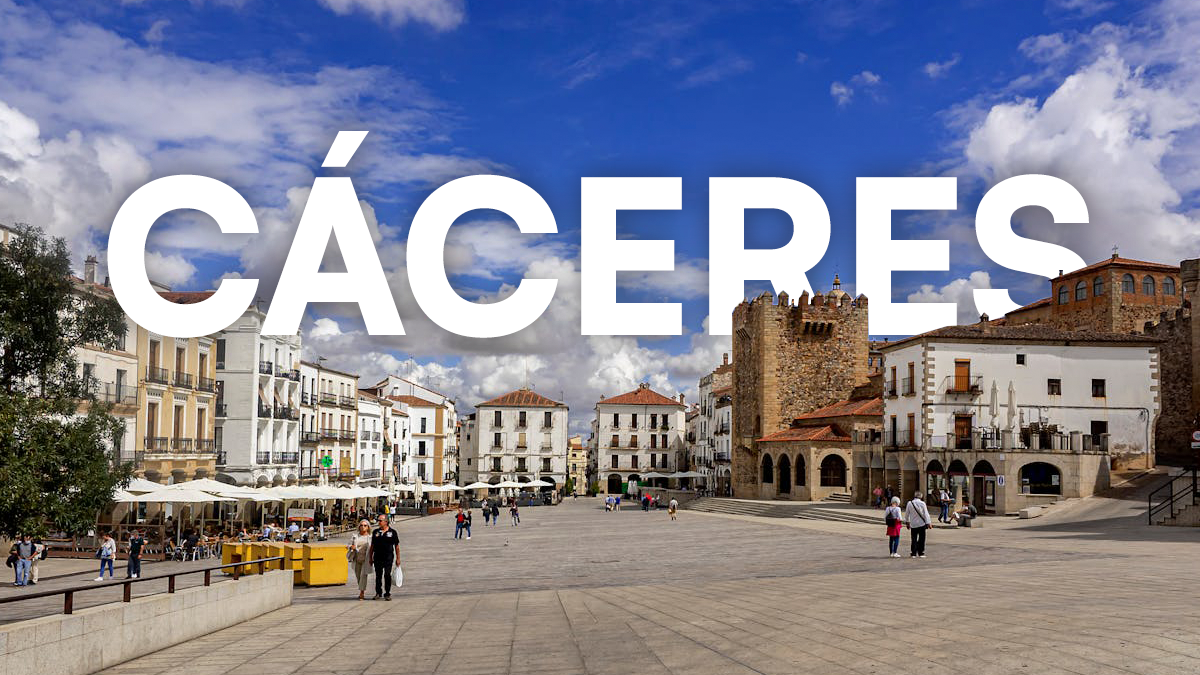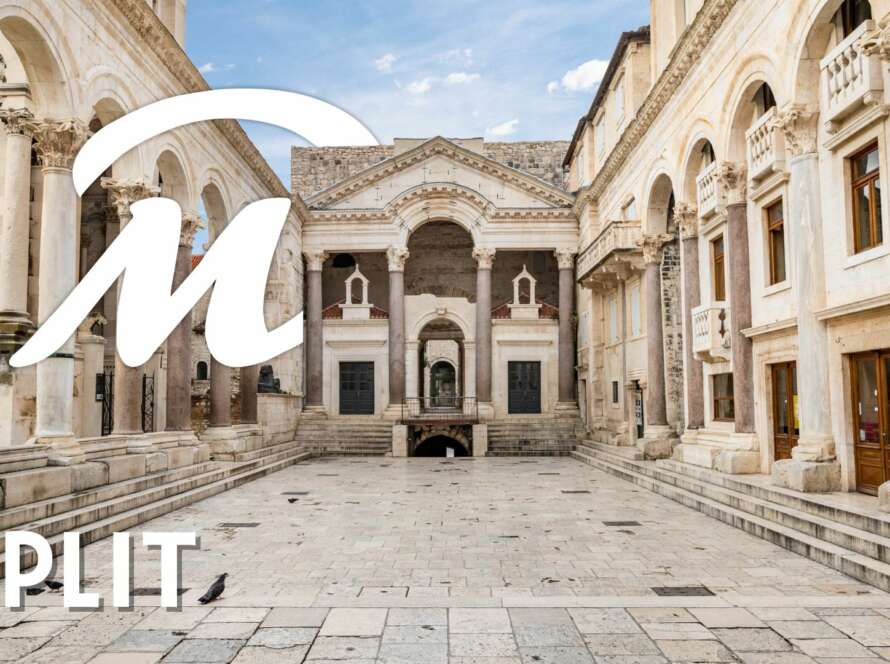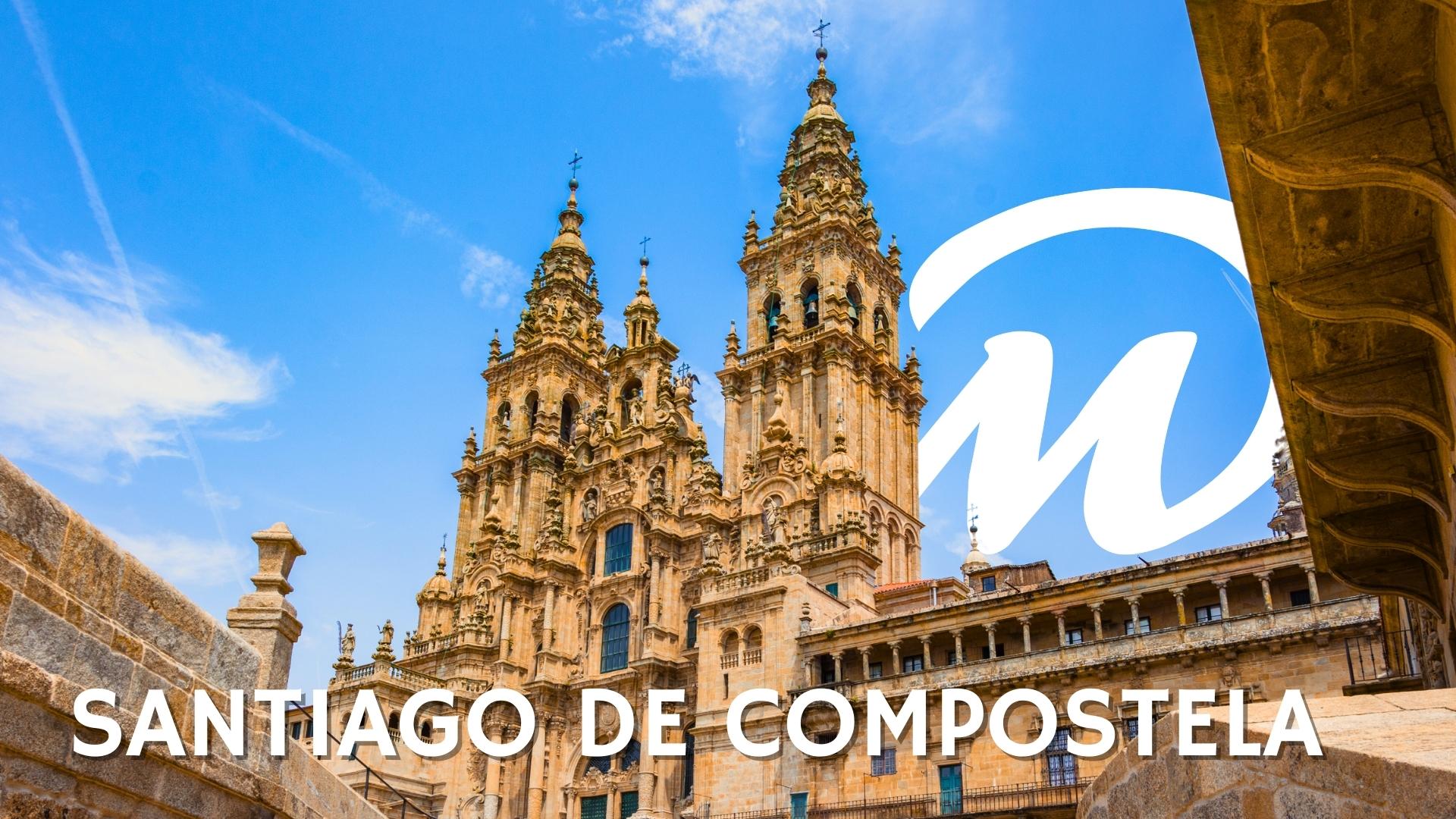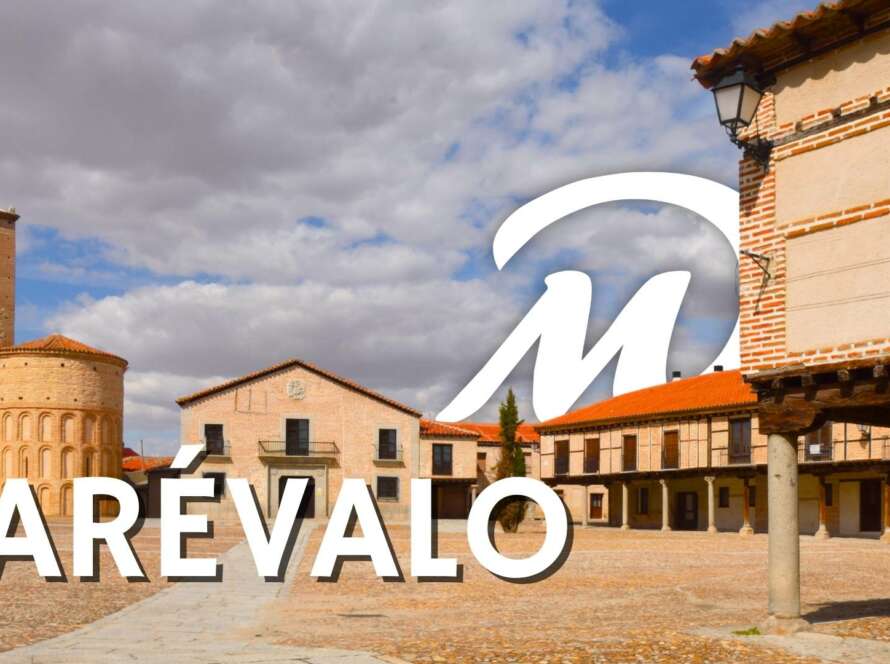Do you want to know the best things to do in Granada to understand why everyone falls in love with this city? Everything here moves at its own special pace. You can start the day having breakfast with views of the Sierra Nevada and end it listening to flamenco inside a cave in Sacromonte. In between, you’ll see how the streets reflect the blend of cultures that once lived here: the Arab heritage, the Christian influence, and today’s vibrant life filling bars, squares, and universities.
Granada has a way of captivating you with its little details. The Alhambra, considered one of the New 7 Wonders of the World, is still the city’s greatest symbol: its halls and gardens tell the story of the last Nasrid kingdom. The Albaicín preserves its medieval layout, with viewpoints that offer unique perspectives of the city. El Realejo blends history and street art, with murals depicting everyday life in the neighborhood. The Cathedral and the Royal Chapel recall the history of the conquest, and as evening falls, the San Nicolás viewpoint fills with people admiring the Alhambra glowing under the night lights.
Here, a beer never comes alone: the city is also known for its free tapas with every drink. In the bars, surrounded by the student vibe and local hospitality, you’ll realize that the journey is also found in everyday life.
⌛ Do you want to continue searching through blogs, or would you prefer to have your guide to Granada ready to go? YOUR VISIT TO GRANADA ORGANISED AND AT YOUR PACE
- Things to do in Granada: 12 places you can't miss
- Things to do in Granada: other places to visit
- Things to do in Granada: Best Tapas
- Cultural things to do in Granada
- Top 3 alternative things to do in Granada
- Extra things to do in Granada
- Practical advice and best tips for traveling to Granada
- Tips to travel with peace of mind
Things to do in Granada: 12 places you can’t miss
If you’re looking for the best things to do in Granada, these 12 must-see places will show you the very best of its history, art, and daily life. From palaces and monasteries to neighborhoods with centuries of history, here you’ll find the essence of the city and its most authentic corners.
1. Alhambra: A Wonder of the World
This majestic 13th century Nasrid fortress and palace is considered a jewel of Islamic art in Spain and is a UNESCO World Heritage Site.
Its decorative details stand out, with mosaics of a thousand colours, as well as its emblematic courtyards such as the Patio de los Leones or its impressive rooms such as the Sala de los Abencerrajes (Hall of the Abencerrajes).
But did you know that it was originally a military fortress? It later became the royal residence and court of the Kingdom of Granada. Today it is one of the most visited monuments in the country, making it an essential place to visit in Granada.
🎟️ Check your tickets here.
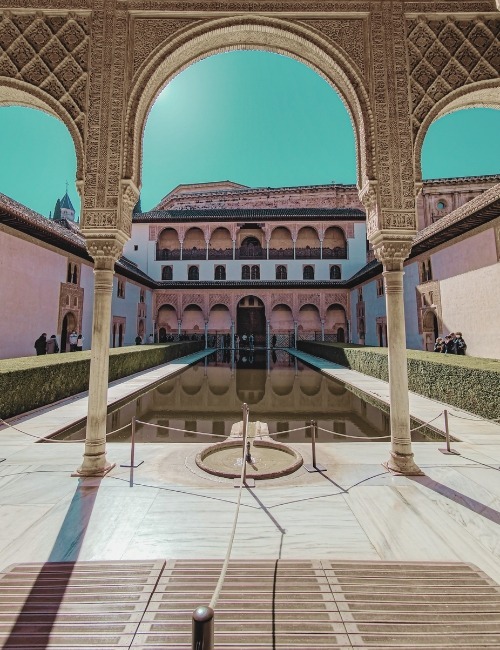
2. Granada Cathedral: Tomb of Kings
Officially known as the Cathedral of the Incarnation, it is a masterpiece of the Spanish Renaissance, located in the heart of the city.
It was built over the Great Mosque after the Christian Reconquest in 1492.
Its impressive main façade and its majestic interior chapels, including the Capilla Mayor and the Capilla Real, the tomb of the Catholic Monarchs, are outstanding.
If you don’t know about the things to do in Granada, we recommend you to visit this central and important point for the city.
🎟️ Check your tickets here.
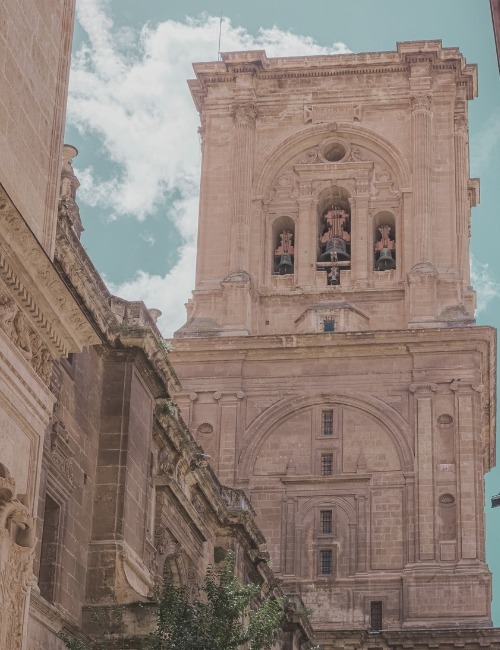
3. Basilica of San Juan de Dios: a Baroque jewel
Built in the 18th century, it stands out for its detailed interior decoration, full of gilding, frescoes and marble.
Its façade is equally impressive, combining different colours of white, green and grey marble. A must among the things to do in Granada.
Inside, you will find the reliquary with the remains of San Juan de Dios, founder of the Hospitaller Order, as well as numerous works of art and altars with great detail.
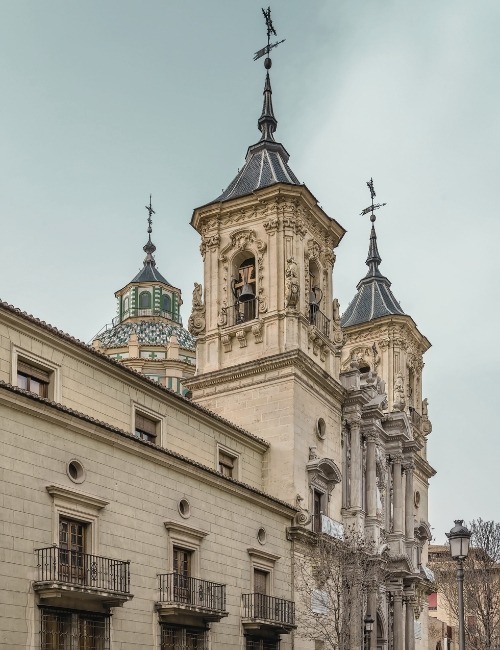
4. Corral del Carbón: Immaculately preserved
Formerly an alhóndiga (grain warehouse) and Nasrid inn, this warehouse is the only building of its kind to be preserved in its entirety on the Iberian Peninsula.
Originally known as Al-Funduq al-Jadida, the Corral del Carbón served as a place of trade and accommodation for merchants arriving in the city.
It is notable for its impressive façade with a horseshoe arch, as well as for its central courtyard surrounded by galleries and rooms.
Nowadays, it is a cultural space that hosts events, exhibitions and activities, offering visitors a window into the historical past discovering the things to do in Granada.
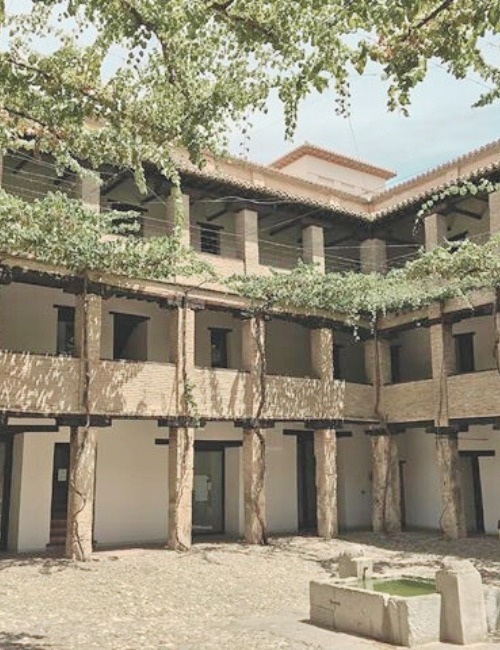
👁 Discover and explore the must things to do in Granada, a city with more stories than excuses not to visit.
Don’t miss out! With DareMapp, your new sightseeing app, you’ve got a guide on your phone without the hassle.
5. Plaza Nueva: Or not so new square?
Located between the Albaicín neighbourhood and the historic centre, this is one of the oldest and most emblematic squares in the city.
Despite its name, the square dates back to the 16th century and has been an important meeting point and social activity throughout the centuries.
This lively space surrounded by historic buildings, such as the Real Chancillería (High Court of Justice of Andalusia) or the Church of Santa Ana, is a main sight over the things to do in Granada.
Curiosity: Did you know that the square had to be rebuilt? In 1835, an overflowing of the Darro river swept away some houses and a fountain from 1593.
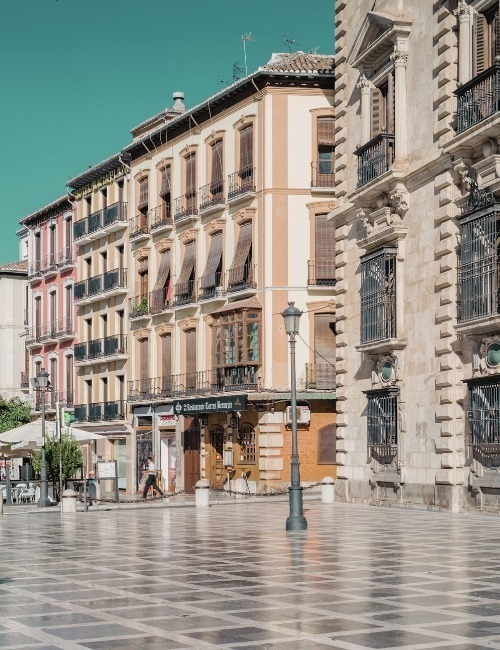
6. Monastery of Nuestra Señora de la Asunción: “La Cartuja”
Better known as “La Cartuja”, it is an impressive monument located in Granada, founded in the 16th century.
Despite being far from the city, this Carthusian monastery is an important building in Granada.
With Gothic and Baroque architectural styles, it stands out for its beautiful cloister, the Chapel of the Holy Trinity with its rich Baroque decoration, and the sacristy, considered a masterpiece of the Spanish Baroque.
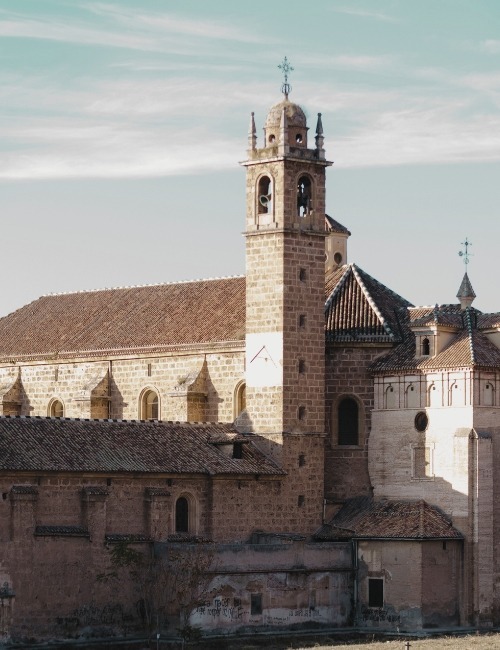
7. Paseo de los Tristes: The Funeral Processions
Officially known as Paseo del Padre Manjón, it is one of the most picturesque and charming places in Granada.
Its popular name, “Paseo de los Tristes”, comes from the fact that it was the path followed by the funeral processions to the cemetery of San José.
Bordering the Darro River, it passes historic buildings, stone bridges, and offers a spectacular view of the Nasrid Palace, making it a path full of history and culture among the things to do in Granada.
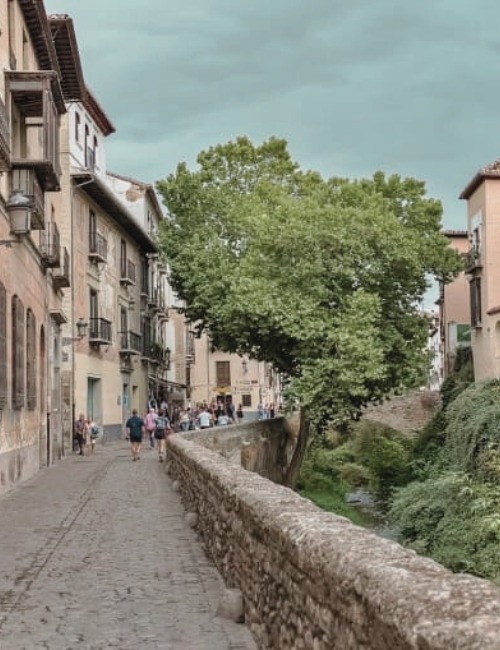
8. Royal Monastery of San Jeronimo: Art and culture
This monastery was the first cloister built after the Christian Reconquest of Granada and is famous for its impressive church and cloister.
The church, dedicated to San Jerónimo, the origin of its name, stands out for its magnificent main altarpiece, considered one of the masterpieces of the Spanish Renaissance, and for its elaborate interior decoration, which includes sculptures and frescoes of great artistic value.
Founded in the 16th century, it also stands out for its pantheon monastery is its pantheon and its beautiful cloister surrounded by gardens.
If you are a lover of art and culture this is a must among the things to do in Granada.
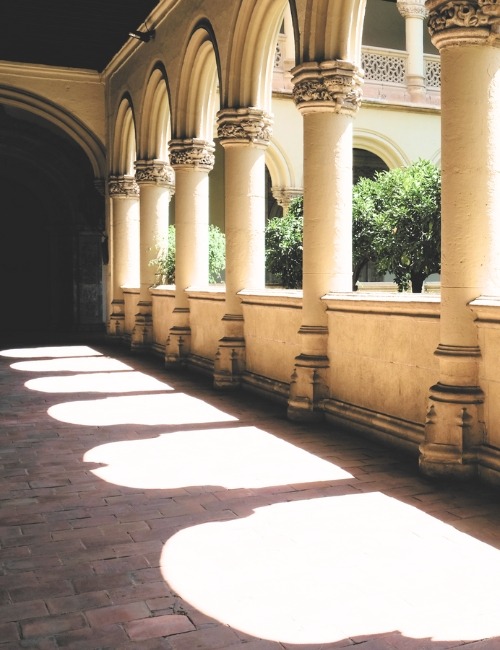
9. Puerta de Elvira: The great entrance
Located at the entrance to the historic centre, this is one of the oldest gates in the city.
Built in the 11th century during Zirid rule, this monumental gate served as the main access to the city from the north. Its impressive horseshoe arch and sturdy walls reflect the defensive architecture of the period.
The origin of its name is curious, as it comes from the nearby town of Elvira, making it a spectacular entrance over the things to do in Granada.
Today it is an emblematic landmark and an evocative reminder of Granada’s medieval splendour, a vestige of its Islamic past, and one of the essential things to do in Granada.
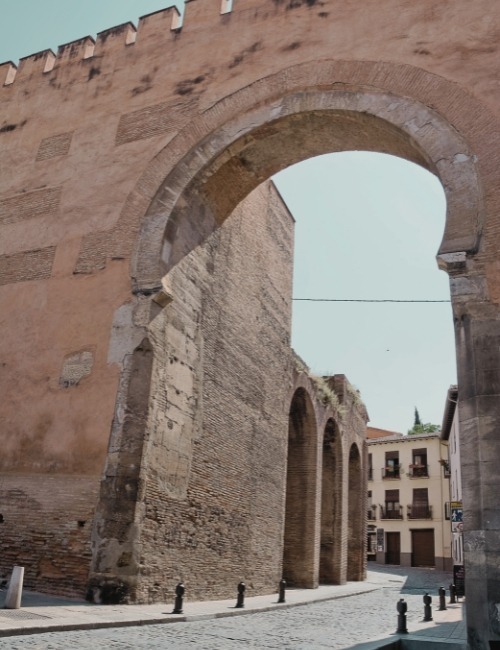
10. Palacio de la Madraza: Former Arab University
The palace was Granada’s first temple of learning, or Arab university, where medicine, law and mathematics, among other disciplines, were taught for 150 years. Built by Sultan Yusuf I in 1349, it was one of the first universities on the peninsula.
However, few copies of its great intellectual wealth remain today due to the burning of its entire library in a public bonfire.
After the Christian Reconquest, the building was converted into the Town Hall of Granada and later housed the University of Granada. Today, the Palacio de la Madraza is a cultural and academic centre, as well as a must on any list of things to do in Granada.
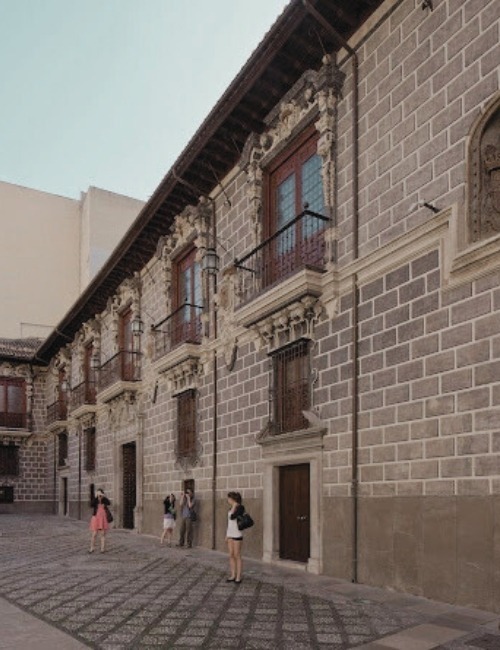
11. Science Park
The Parque de las Ciencias de Granada is an extensive and modern interactive science and technology museum, inaugurated in 1995 and a must among the things to do in Granada.
Its main attractions include the Planetarium; the Biodome, a space dedicated to biodiversity; and the Observation Tower, which offers panoramic views of Granada and the Sierra Nevada.
In addition, the park has a tropical butterfly farm and an outdoor area with gardens and areas for interactive experiments.
It is an educational and entertaining place for all ages, making it a must in our list “Things to do in Granada” for those who want to explore and learn about the world of science.
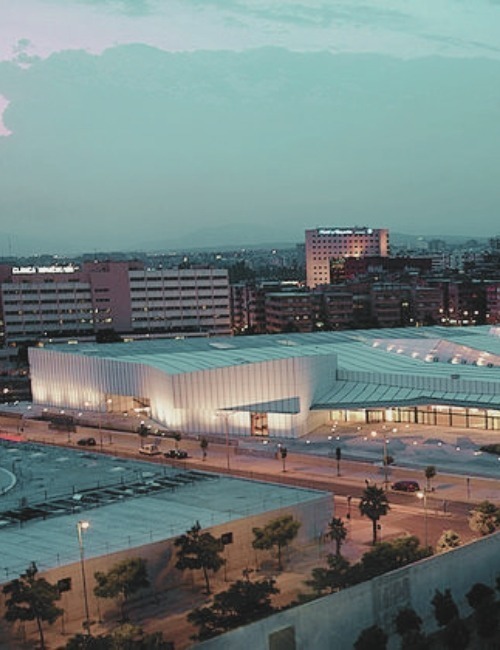
12. El Albaicín neighbourhood:
“El Albaicín” is one of the oldest and most charming neighbourhoods in the city, known for its maze of narrow cobbled streets, whitewashed houses and panoramic views of the Alhambra.
Declared a UNESCO World Heritage Site, it preserves the essence of its Islamic past, with numerous remains of ancient walls, gates and cisterns.
Its points of interest include the Mirador de San Nicolás, a spectacular view of the Alhambra; the Bañuelo, one of the best preserved Arab baths in the country; and the Casa del Chapiz.
Today, the Albaicín is a vibrant and bohemian place, full of tea shops, tapas bars and craft shops, which you definitely is a must in the things to do in Granada.
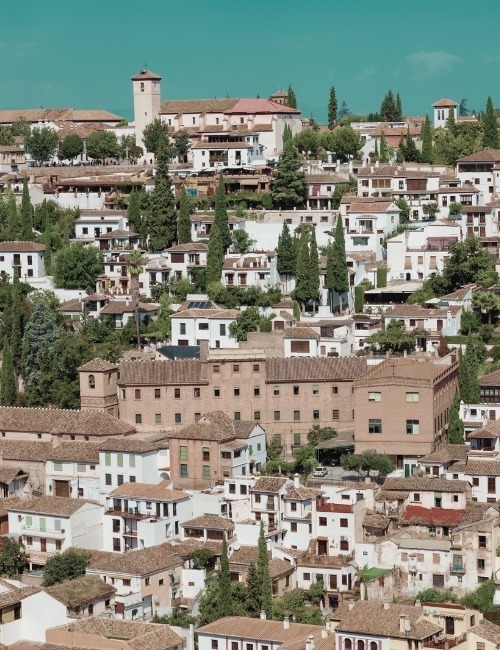
Things to do in Granada: other places to visit
If you’re wondering about the things to do in Granada, these nearby towns and sites will take you beyond the city. Historic villages, charming landscapes, and unique experiences that complete your trip and reveal a more diverse and authentic side of Granada.
Sacromonte Abbey and the Sacromonte Caves Museum
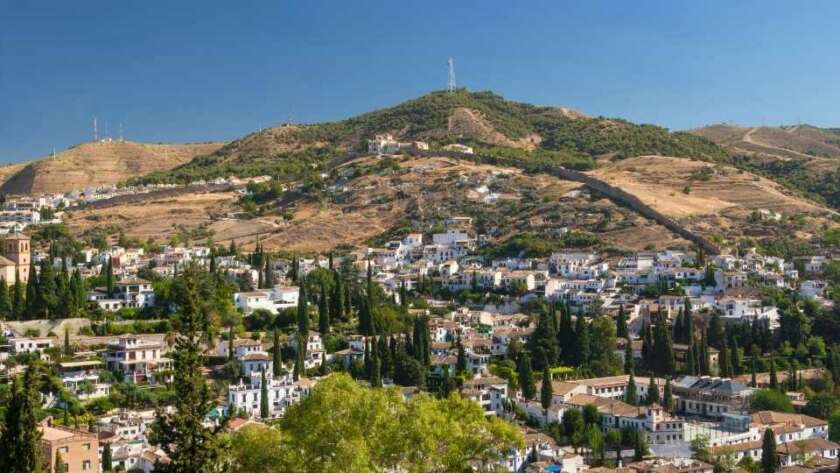
At the top of Sacromonte stands the Abbey of Sacromonte, built between the 17th and 18th centuries over the supposed relics of Saint Cecilius, the patron saint of Granada. The complex includes catacombs, a collegiate church, and a seminary, and offers spectacular views of the city.
Nearby, the Sacromonte Caves Museum recreates the traditional cave houses of the neighborhood, showcasing old trades and the lifestyle of the Roma community that gave birth to flamenco. You can find the visit at this link.
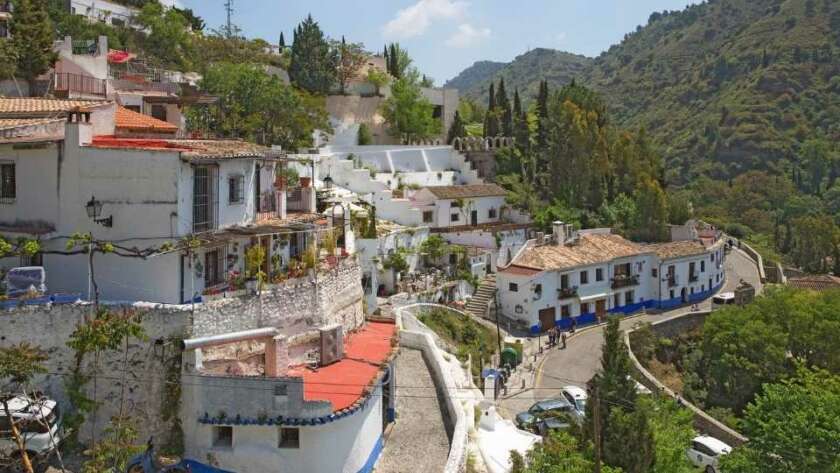
Together, they make up an essential visit to understand the spiritual and cultural history among the most meaningful things to do in Granada, right from the top of the city’s most iconic neighborhood.
The Bañuelos
The Bañuelos are one of the best-preserved examples of Arab baths in Spain and a living testimony to Muslim Granada. Located in the Albaicín neighborhood, these baths date back to the 11th century and allow you to imagine what daily life was like in the city during the Nasrid period.
The complex stands out for its traditional layout: dressing rooms, cold, warm, and hot water halls, with horseshoe arches and vaulted ceilings that preserve the essence of Islamic architecture. The materials and decorations, though simple, reflect the sophistication of leisure and cleansing spaces at that time.
If you’re a lover of history and culture, the Bañuelos are a must-see, and visiting them is without doubt one of the essential things to do in Granada, where the past comes alive and the importance of Arab heritage in the city becomes clear.
Carmen de los Mártires
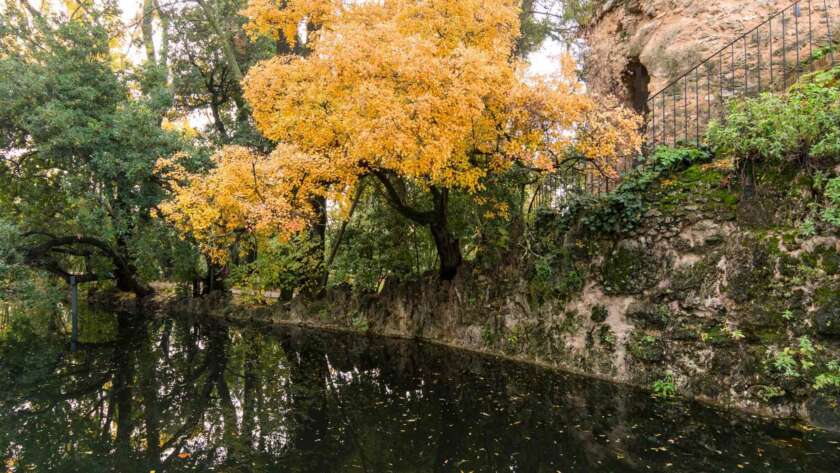
The Carmen de los Mártires is one of Granada’s most remarkable historic gardens, built in the 19th century on land that once belonged to the Nasrid palace of the Abencerrajes. Its name “Carmen” refers to the local tradition of houses with adjoining gardens, surrounded by walls and orchards.
Strolling through its paths, you’ll find fountains, ponds, and landscaped areas with plant species from around the world, offering peaceful corners and refreshing shade. From its terraces, you can enjoy panoramic views of the Alhambra, the Albaicín, and the Sierra Nevada—perfect for photography or simply taking in the scenery.
It’s a place where history, nature, and breathtaking views come together, making it a key stop and one of the must-see things to do in Granada.
Royal Monastery of San Jerónimo
Founded in the 16th century, this monastery emerged as part of Granada’s religious and architectural development after the Reconquest. Less known than the Royal Monastery of San Jerónimo, it preserves a complex of church, cloisters, and courtyards with a serene atmosphere that invites reflection.
Its church blends Renaissance and Baroque elements, with sculptural details and frescoes that showcase the religious art of the time. Walking through its cloisters and courtyards allows you to appreciate how monastic life was intertwined with the city, and its location next to the old walls also provides a unique historical setting, making it one of the remarkable things to do in Granada.
Palace of Charles V
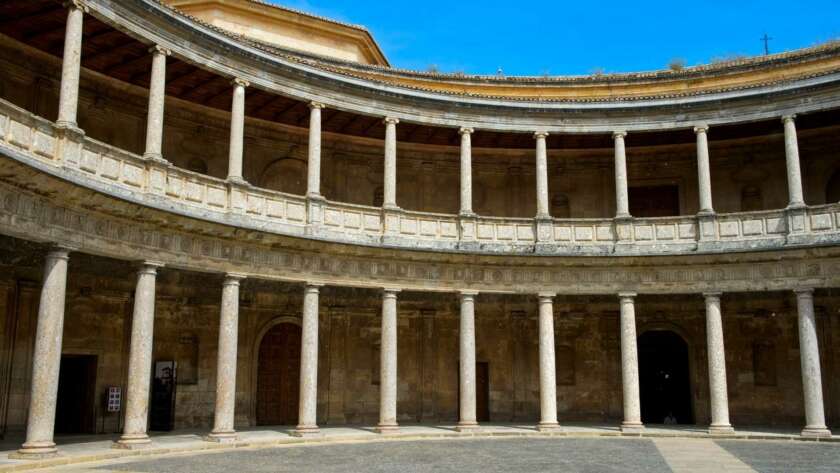
Among the many corners to discover, the Palace of Charles V stands out with its Renaissance elegance right in the heart of the Alhambra.
Commissioned in the 16th century by Emperor Charles V, this building is remarkable for its square layout and its spectacular circular courtyard, a unique work in Spain that contrasts with the Nasrid style dominating the rest of the complex. Its stone façade and perfect proportions make it a brilliant example of Italian Renaissance architecture.
Today it houses two cultural spaces of great interest: the Museum of Fine Arts of Granada, with a valuable collection of painting and sculpture, and the Alhambra Museum, ideal for delving deeper into the history of the monument and the last Nasrid kingdom.
Visiting it is not only a journey through art and history, but also one of the essential things to do in Granada, showing how the city moved from its Muslim past to imperial splendour in a single place.
Tips to travel with peace of mind
When everything is ready — flights, hotel, itinerary — there are only two more things you need to travel worry-free: a good internet connection and reliable travel insurance.
✔ Get an international eSIM already set up on your phone. No need to change your SIM card, search for Wi-Fi, or pay for roaming. Activate it before your trip and enjoy unlimited data from the very first minute, wherever you are.
✔ Take out travel insurance that includes medical assistance 24/7, coverage for cancellations, theft, and — most importantly — advance payment of all medical expenses without you having to pay, wherever you are. Because in a new country, what matters most is feeling safe. Moreover, DareMapp offers you a 5% discount.
Both services can be arranged online in less than 5 minutes, with no paperwork required.
Don’t leave it to the last minute!
👉 Activate your Holafly eSIM at the best price here.
👉 Take out your travel insurance with IATI and get a 5% discount.
Tourism means visiting Granada but also tasting the local dishes. Here are some tapas that characterise the city:
Things to do in Granada: Best Tapas
Granada doesn’t just win you over with its history and viewpoints; its cuisine is a journey in itself. Here, every dish tells a story of its Arab, Christian, and Mediterranean past, and every bar is an excuse to try something new. When you think about the things to do in Granada, make sure to add what to eat as well, because these dishes are an essential part of the trip.
Tortilla del Sacromonte

Born in the emblematic Sacromonte neighborhood, this omelette is a true symbol of Granada’s popular cuisine. Its traditional recipe includes lamb brains and testicles, ingredients once considered a delicacy. The mix is completed with eggs, ham, and, in some versions, peas or potatoes.
Its origin is linked to the Roma community, traditionally known in Spain as the gypsies, who made the most of every product available. Today, many bars offer milder versions (with chorizo, ham, or vegetables), but the essence remains the same: a juicy omelette, full of flavor, with a history that speaks of blending and culinary creativity. Tasting it is not only a gastronomic experience but also one of the authentic things to do in Granada.
Plato Alpujarreño

This hearty dish perfectly represents the cuisine of the mountains. It’s served in generous portions that combine patatas a lo pobre (slow-fried potatoes with onion and pepper), fried egg, longaniza, blood sausage, pork preserved in lard, and Jamón de Trevélez, one of Spain’s most renowned hams thanks to its natural curing process in the mountains of the Alpujarra.
It originated as an energy-packed meal for local laborers, and today it’s the ideal choice to recharge after a day exploring the many things to do in Granada or the nearby villages.
Remojón Granadino

A dish that surprises with its mix of fresh and salty flavors. It’s a cold salad made with shredded cod, sweet oranges, spring onion, black olives, and a dressing of extra virgin olive oil. Its origin goes back to the Andalusí period, when it was common to balance sweet and salty in the same bite.
Perfect for hot days or as a light starter, it shows that Granada’s cuisine goes far beyond hearty mountain stews. In some versions it includes hard-boiled egg or pomegranate seeds, a nod to the fruit that gives the city its name. Trying it is also one of the refreshing things to do in Granada if you want to taste the city’s diverse culinary heritage.
Habitas con jmón

A seasonal dish that captures the richness of Granada’s farmland. Tender broad beans are sautéed in olive oil with garlic and paired with Jamón de Trevélez, which adds the perfect salty touch. Some recipes also include a poached egg or a hint of mint to enhance the flavor.
With peasant origins, today you’ll find it on the menus of bars and restaurants across the city, from traditional taverns to modern fine-dining spots. Tasting it is another delicious way to connect with local traditions and one of the most authentic things to do in Granada.
Piononos de Santa Fe

Piononos de Santa Fe are the perfect sweet ending to any visit. Originating in the town of Santa Fe, just 10 km from Granada, these little sponge cakes are rolled, soaked in syrup, and topped with a lightly caramelized cream. They were created in the 19th century by pastry chef Ceferino Isla to honor Pope Pius IX, which explains their name.
With their spongy texture and balance between sweetness and smoothness, piononos have become a true institution — whether enjoyed in a fine-dining restaurant or a neighborhood pastry shop, tasting them is one of the sweetest things to do in Granada.
🤤 Makes your mouth water, doesn’t it? That’s why we’ve made it easy for you: the best food stops in Granada, ready to make sure you don’t waste a minute.
Say goodbye 👋🏻 to endless scrolling and start enjoying Bruges for real.
Cultural things to do in Granada
If you want to discover the cultural heritage of the city, exploring the museums, former mosques, and historic spaces is one of the most enriching things to do in Granada. These places reveal centuries of coexistence between cultures and traditions. This section will guide you through some of the most emblematic and surprising corners of the city.
Museum of Fine Arts of Granada
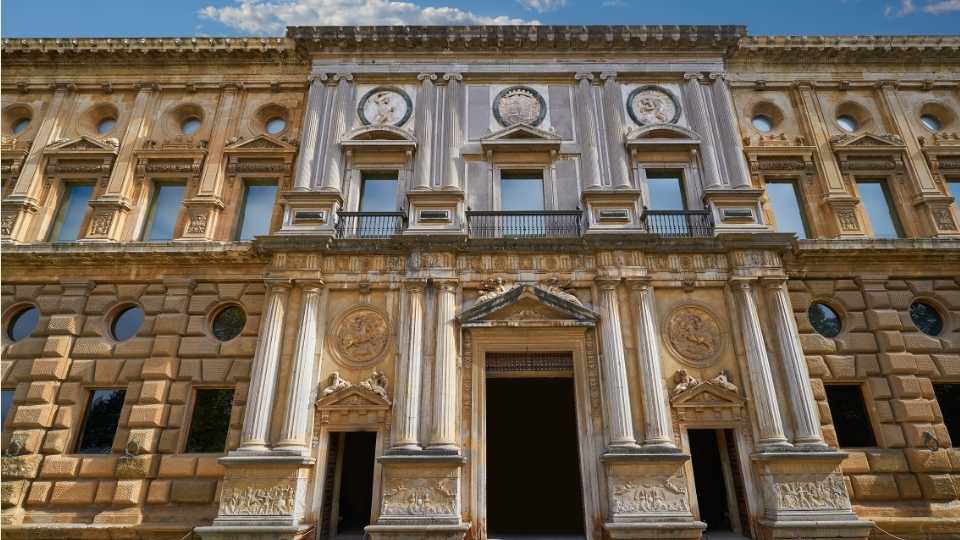
If you’re looking for the most inspiring things to do in Granada in the field of art, the Museum of Fine Arts is an essential stop. Located in the former Royal Chancellery, it houses paintings, sculptures, and objects spanning from the Renaissance to the 20th century.
Highlights include works by Granadan and Andalusian artists, offering a window into the city’s artistic evolution and its connections with the rest of Spain. Walking through its galleries means journeying through centuries of history and creativity, admiring both the technique and the passion behind each piece.
Palacio de los olvidados
The Palacio de los Olvidados is one of the most distinctive spaces to discover Granada’s history. This museum focuses on the life of the Jewish and Muslim communities during the Middle Ages and the period of the Reconquest, showing how they coexisted and contributed to the city’s cultural and economic development.
Through objects, historical documents, and interactive exhibitions, visitors can explore the daily life, traditions, and customs of these communities, often overlooked in other tourist routes. For those who want to truly understand the city’s historical richness, visiting the Palacio de los Olvidados is an essential stop and one of the most meaningful things to do in Granada.
Federico García Lorca Centre
The Federico García Lorca Centre is dedicated to the life and work of Granada’s most celebrated poet, offering a unique window into the city of the 20th century. The centre brings together exhibitions, original documents, and interactive spaces that trace his literary and artistic career, as well as his deep connection to the city that inspired him.
It also sheds light on the cultural movements of his time and the influence of local history on his work. The Federico García Lorca Centre is an unmissable visit and one of the most inspiring things to do in Granada.
Great Mosque of Granada
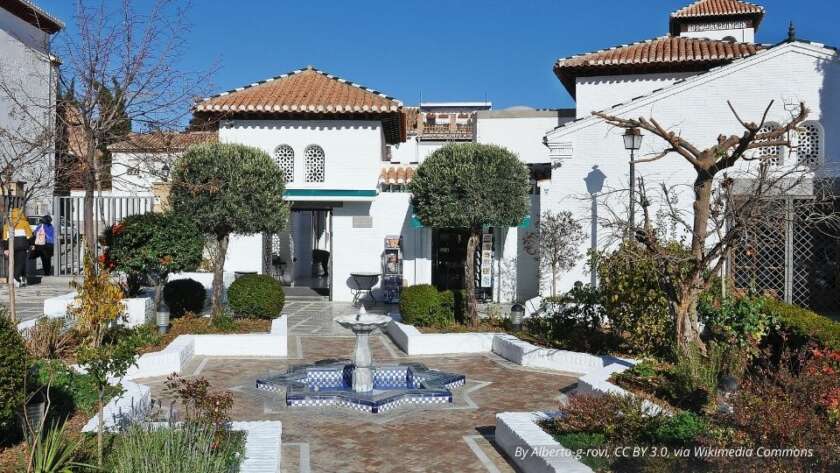
The Great Mosque of Granada is today the city’s main Muslim place of worship and a symbol of the Islamic presence that remains alive in Granada. Located in the historic centre, its modern architecture combines functionality with respect for tradition, offering spacious areas for prayer along with decorative details that recall the Andalusí heritage.
Visiting the mosque provides an opportunity to learn more about the religious and cultural life of the local Muslim community, while also reflecting on Granada’s history and the diversity of its legacy. For those who want to embrace all facets of the city, including it on the list of things to do in Granada offers a different, more contemporary, and enriching experience.
Top 3 alternative things to do in Granada
1.-Have a Hammam ritual – Take a bath!
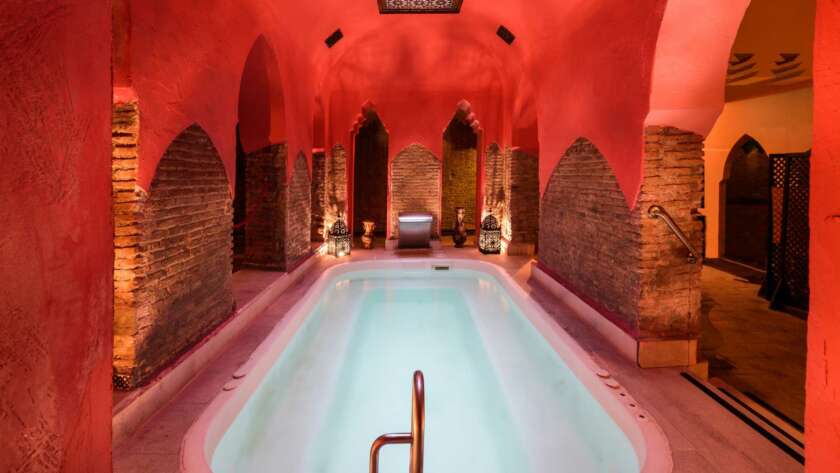
A hammam is a Turkish bath, a place where you can enjoy steam-based body treatments. Its a great activity if you don´t know about other things to do in Granada.
These are based on purification, especially important in Muslim culture and have numerous benefits, such as improving the respiratory system, relaxation and cleansing the skin.
In Granada, after the banning of baths by the Catholic Monarchs in the 16th century, many Moorish bathhouses were converted into bread ovens, using the boilers to heat the water. This historical transformation explains the location of the current hammam, being former bread ovens.
If you do not know about the things to do in Granada, this is an activity that we recommend you to do, relax and enjoy!
Check your tickets here.
2.-Enjoy a flamenco show
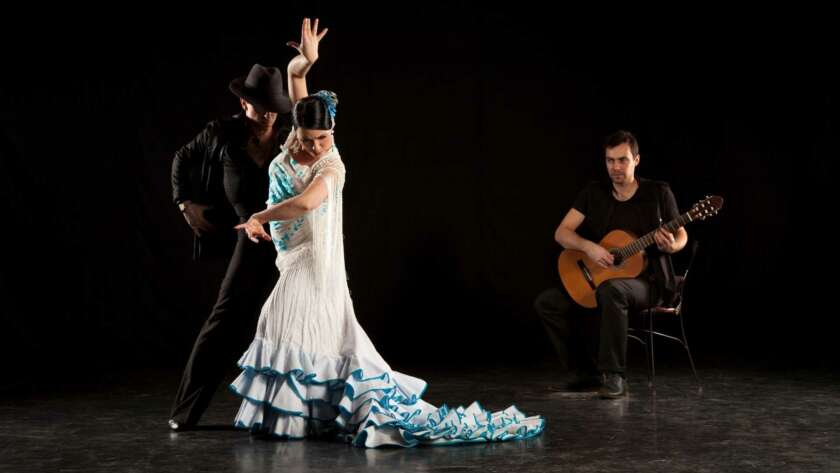
Another activity among the things to do in Granada is the world famous flamenco shows.
One of the most popular and famous places to see this musical dance is in the Sacromonte of Granada. This neighbourhood, famous for its caves-houses, offers an authentic atmosphere where flamenco comes to life with unrivalled intensity and passion.
Why caves? When the gypsy group arrived in Granada after the Christian Reconquest and settled in this area, they had to look for a refuge where they could establish themselves, far from persecution. Dug into the rock itself, these caves were the only safe home for this marginalised people.
Check your tickets here for a classic Flamenco Show.
Check your tickets here for a Flamenco show at the Taranto’s Cave.
Check your tickets here for a Flamenco show at Ana’s House.
3.-Take a trip to the Alpujarras
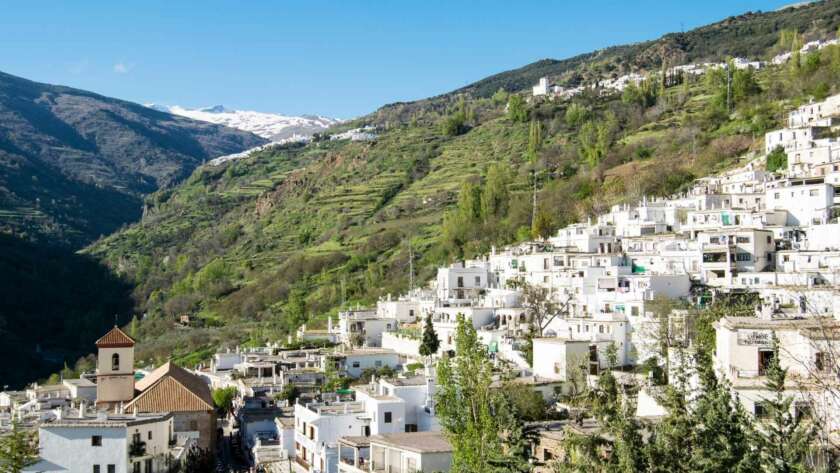
The origin of the name Alpujarra comes from the Arabic “al-Bugsharra”, meaning “land of pastures” or “land of grass”, and this Arabic heritage is reflected throughout this enchanting region.
The Alpujarras are a series of picturesque villages on the slopes of the Sierra Nevada, known for their well-preserved Moorish architecture, narrow whitewashed streets and green terraces.
Only 23 km from Granada, visiting it is one of the best things to do in Granada.
Río Verde Gorge
If you’re looking for things to do in Granada beyond the historic centre, the Río Verde Gorge in Otívar is a must for adventure lovers. This canyon offers crystal-clear waters, jumps, natural slides, and waterfalls, making it a refreshing and exciting experience, especially in summer.
The activity is carried out with a guide and specialised equipment, so it’s safe even for beginners in canyoning. It’s the perfect way to enjoy the Granadan mountains, connect with nature, and add a dose of adrenaline to your trip.
🎟️ Click here to get your tickets for canyoning in Río Verde.
Vía Ferrata Climbing Trip – An Adrenaline Rush
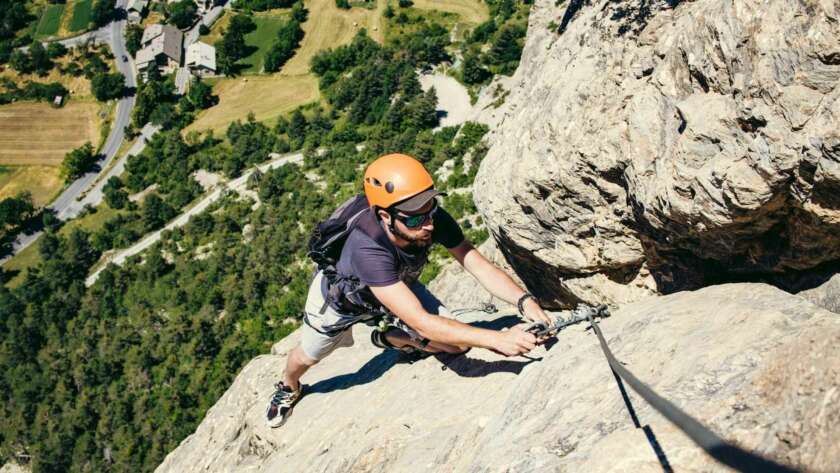
Another way to experience the mountains while exploring the many things to do in Granada is by trying a via ferrata. These climbing routes are equipped with steps, cables, and bridges that make the journey easier, allowing you to enjoy spectacular views without needing to be an expert climber.
Around Granada, routes such as those in Moclín, Zafarraya, or Loja stand out, some even featuring zip lines and hanging bridges that add an extra thrill. Guided excursions are available for all levels, making them a great way to combine nature, sport, and adventure in the heart of the Granadan mountains.
🎟️ You can book the guided visit to the Moclín Via Ferrata with climbing tickets at this link.
Extra things to do in Granada
If you thought Granada was all about the Alhambra, tapas, and flamenco, you’re in for a surprise! Beyond its iconic landmarks, the region is packed with unique experiences that will make your trip even more memorable. From stunning caves to adrenaline-filled adventures, here are some extra things to do in Granada that you won’t want to miss.
- Caves of Nerja – A Subterranean Wonder
Located just an hour from Granada, the Caves of Nerja are an absolute must-visit. These impressive caverns stretch for almost five kilometers and house prehistoric cave paintings that date back over 40,000 years. The massive stalactites and stalagmites inside create a surreal atmosphere, making this one of the best things to do in Granada for history and nature lovers alike. Check your tickets here. - Fortress of La Mota – A Hidden Medieval Gem
For those who love medieval history, the Fortress of La Mota in Alcalá la Real is an incredible day trip. This 13th-century stronghold played a crucial role during the Reconquista, offering breathtaking views of the surrounding countryside. Exploring its ancient walls and hidden passageways is one of the most underrated things to do in Granada if you’re a fan of castles and fortresses. Check your tickets here. - Nuevo Los Cármenes Stadium – A Football Fan’s Dream
Football lovers can’t miss a match at Nuevo Los Cármenes Stadium, home to Granada CF. Whether you’re a die-hard fan or just want to experience the electric atmosphere of a Spanish football game, this is one of the most exciting things to do in Granada for sports enthusiasts. Check your tickets here.
These excursions, along with many other plans to explore the best things to do in Granada, are available on the DareMapp app.
Things to do in Granada: Mysteries and Tales that Enrich the City
Granada is a city steeped in history and culture, but also in legends and curiosities that give it a unique charm. These stories, which have been passed down from generation to generation, offer a magical and mysterious perspective of the city. Here are some of the most interesting legends and curiosities among the things to do in Granada.
1. The Legend of the Suspiro del Moro (the Moor’s Sigh)
One of the most touching legends among the things to do in Granada is knowing about the legend; Suspiro del Moro, related to the last Muslim king of Granada, Boabdil. According to tradition, when Boabdil was defeated and forced to abandon the city after the Reconquest in 1492, he stopped at a high point known as the “Puerto del Suspiro del Moro”, from where he looked down for the last time on his beloved Alhambra. On seeing the city for the last time, Boabdil let out a sigh of sadness and despair.
His mother, Sultana Aixa, reproached him harshly: “Weep as a woman for what you were unable to defend as a man”. This moving site remains a point of interest for those who wish to connect with this significant moment in Granada’s history.
2. The Mystery of the Fuente del Avellano (Hazel Tree Fountain)
Another fascinating curiosity in the things to do in Granada is the Fuente del Avellano, located in the valley of the river Darro. This fountain has been famous since ancient times for the curative properties of its waters. Legend has it that a blind shepherd discovered the fountain and, after washing his eyes with its water, miraculously recovered his sight. Since then, the fountain has been a place of pilgrimage for those seeking to cure ailments or receive blessings. In addition, the Granada poet Ángel Ganivet founded the famous “Cofradía del Avellano” (Brotherhood of the Hazel Tree), a literary circle that met at the fountain to discuss art and literature.
3. The Curiosity of the Aljibe del Rey (King’s Cistern)
The Aljibe del Rey, located in the Albaicín quarter, is one of the largest and oldest cisterns in Granada, with a capacity to store up to 300,000 litres of water. This cistern is not only a fascinating example of hydraulic engineering from the Nasrid period, but it is also shrouded in legend. It is said that underneath the cistern there is a secret passageway that connected to the Alhambra and was used by Nasrid monarchs to escape in times of danger. Today, the cistern houses the headquarters of the AguaGranada Foundation, which offers guided tours to learn more about the history of water in Granada and discover this special place included in your list of must things to do in Granada.
4. The Legend of the Silla del Moro (Moor’s Chair)
In the hills surrounding the Alhambra is a place known as the Silla del Moro (Moor’s Chair), a structure that offers a panoramic view of the city. According to legend, this chair was used by Boabdil himself to observe from afar the movements of the Catholic Monarchs during the siege of Granada. Another version of the legend suggests that the chair belonged to an earlier sultan, who used it to contemplate his domain and relax on days of peace. Although not much remains of the original structure today, the Silla del Moro is still a place full of mysticism and an interesting stop amon the things to do in Granada for those interested in the stories of the past.
These legends and curiosities are just some of the many fascinating stories over the things to do in Granada. Exploring these tales will allow you to discover the city from a different perspective, where history and fantasy intertwine to create a unique charm.
Practical advice and best tips for traveling to Granada
Planning a trip to enjoy the many things to do in Granada is simple, but a few tricks can make your experience even better. Here are some practical recommendations to make the most of every moment in the city of the Alhambra.
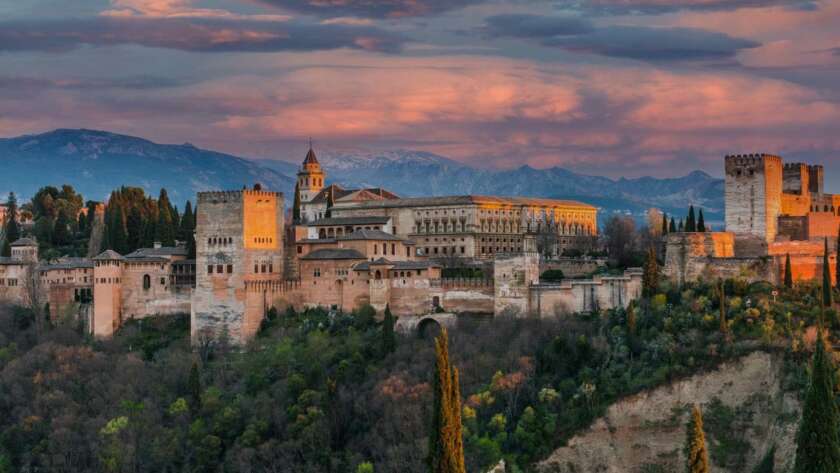
Getting there and getting around the city
Granada has an airport, a train station, and bus connections from cities like Madrid, Málaga, or Seville. If your plan is to explore the main things to do in Granada, the best option is to walk through the historic centre, since many streets are pedestrian-only. For more distant areas, the local bus network works very well and offers affordable fares.
⭐️ Star tip: if you’re planning to visit the Alhambra, make sure to buy your tickets in advance. It’s the most sought-after of all the things to do in Granada, and spots sell out quickly.
Where to stay
To enjoy all the main things to do in Granada, the neighborhoods of Albaicín, Realejo, and the city centre are ideal if you want to be close to the major monuments. Sacromonte offers unique accommodation, with cave houses transformed into rural lodgings, perfect for a different kind of experience.
⭐️ Star tip: if you’re after unforgettable views of the Alhambra, choose a hotel in the Albaicín and enjoy the viewpoints at sunrise.
Tickets and monuments
The Alhambra is the top must-see among all the things to do in Granada, and tickets sell out quickly. Book several weeks in advance to make sure you don’t miss it. The Cathedral, the Royal Chapel, the Monastery of La Cartuja, and the Science Park are also well worth a visit. If you’re planning to see several monuments, consider the Granada Card Tourist Pass, which includes public transport and entry to key sites.
⭐️ Star tip: entry to the Nasrid Palaces at the Alhambra is at a fixed time — arrive at least 30 minutes early to avoid last-minute stress.
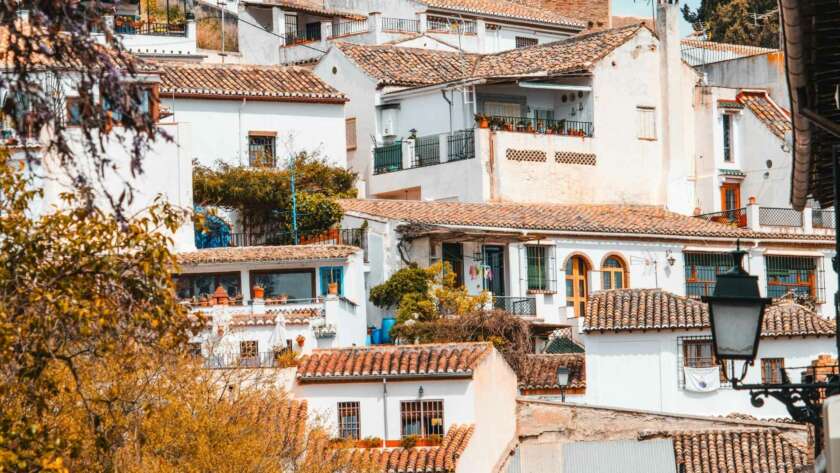
Climate and best time to visit
Granada has cold winters and very hot summers. Spring and autumn are the most pleasant seasons for walking around and enjoying the terraces. In summer, plan your visits early in the morning or later in the afternoon to avoid the hottest hours.
⭐️ Star tip: if you’re travelling in winter, take advantage of the proximity to Sierra Nevada. In less than an hour, you can go from the viewpoints of the Albaicín to the ski slopes.
🗺️ Your Granada route with Daremapp
📍 More than 20 points of interest
🚀 An organised route to make the most of your time
💡 Recommendations, excursions & unique experiences
❓ Questions, quizzes and more than 2h of narrated content

Remember that with DareMapp you can take a multitude of interactive guided tours. Fun tourism in the main destinations.
Click here to discover all our destinations.
What better way to travel and discover a city than learning in a fun way? Visit our blog to discover a lot of tips about tourism.
Visit our social networks and discover what to see in hundreds of cities


